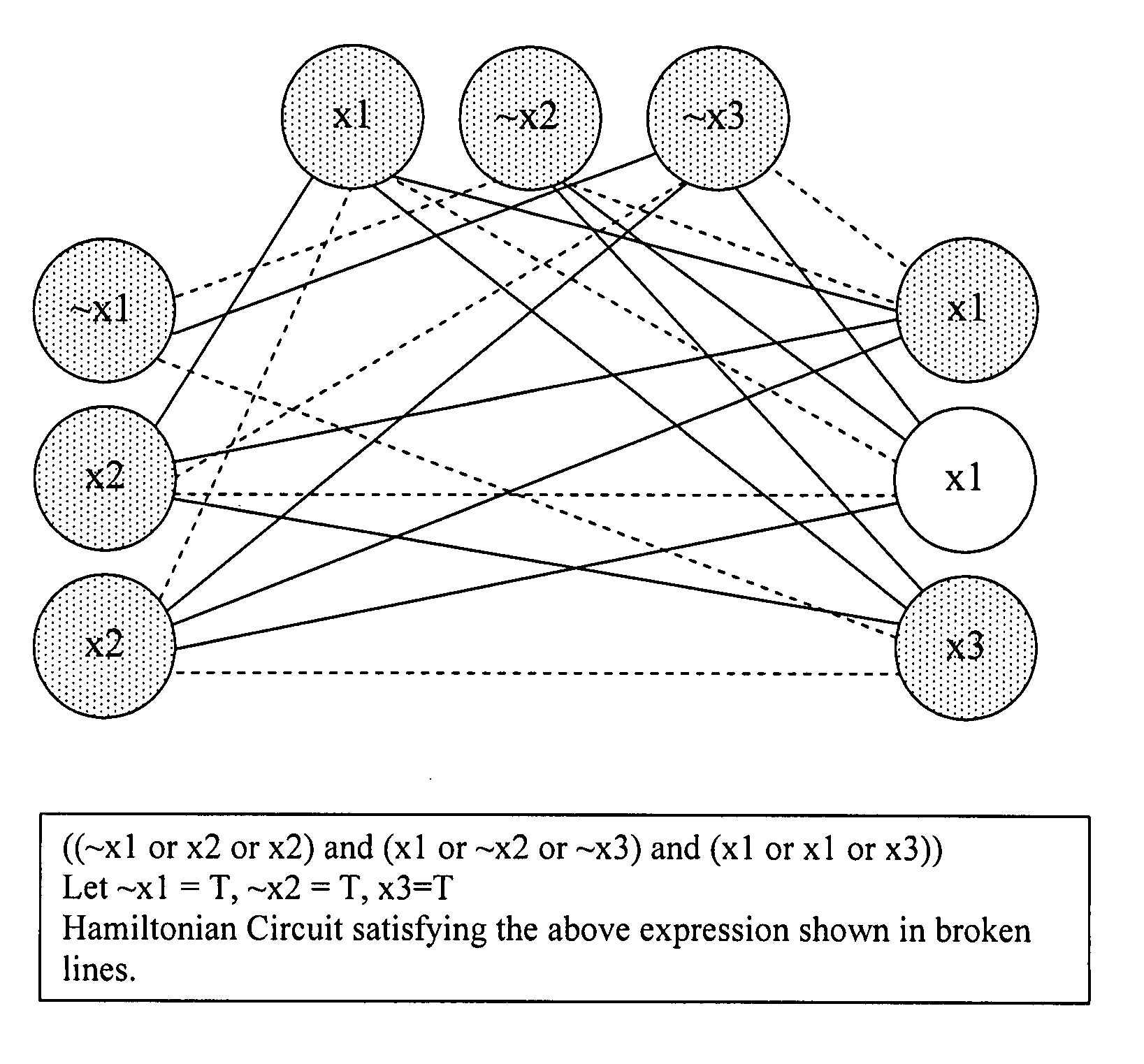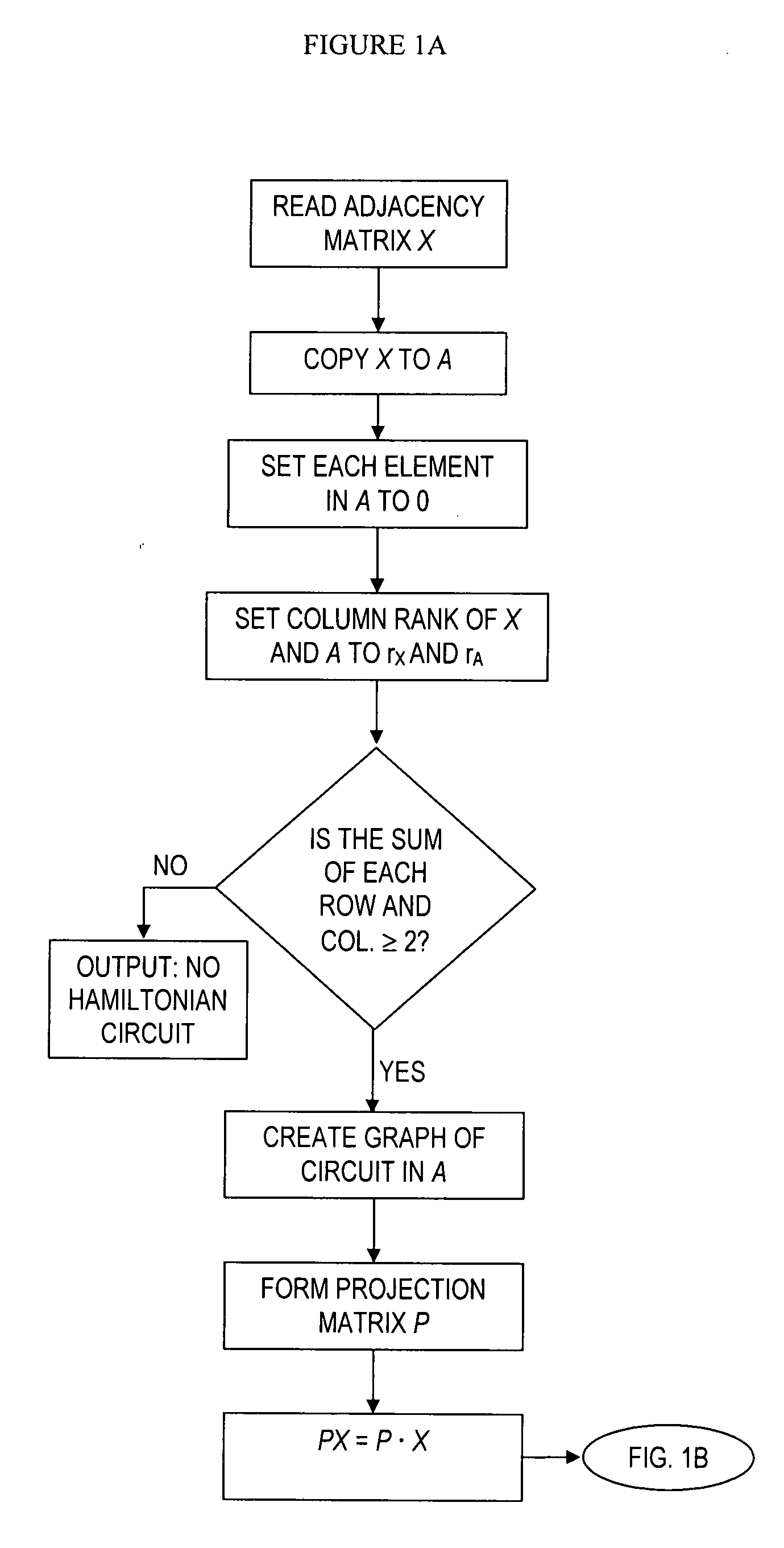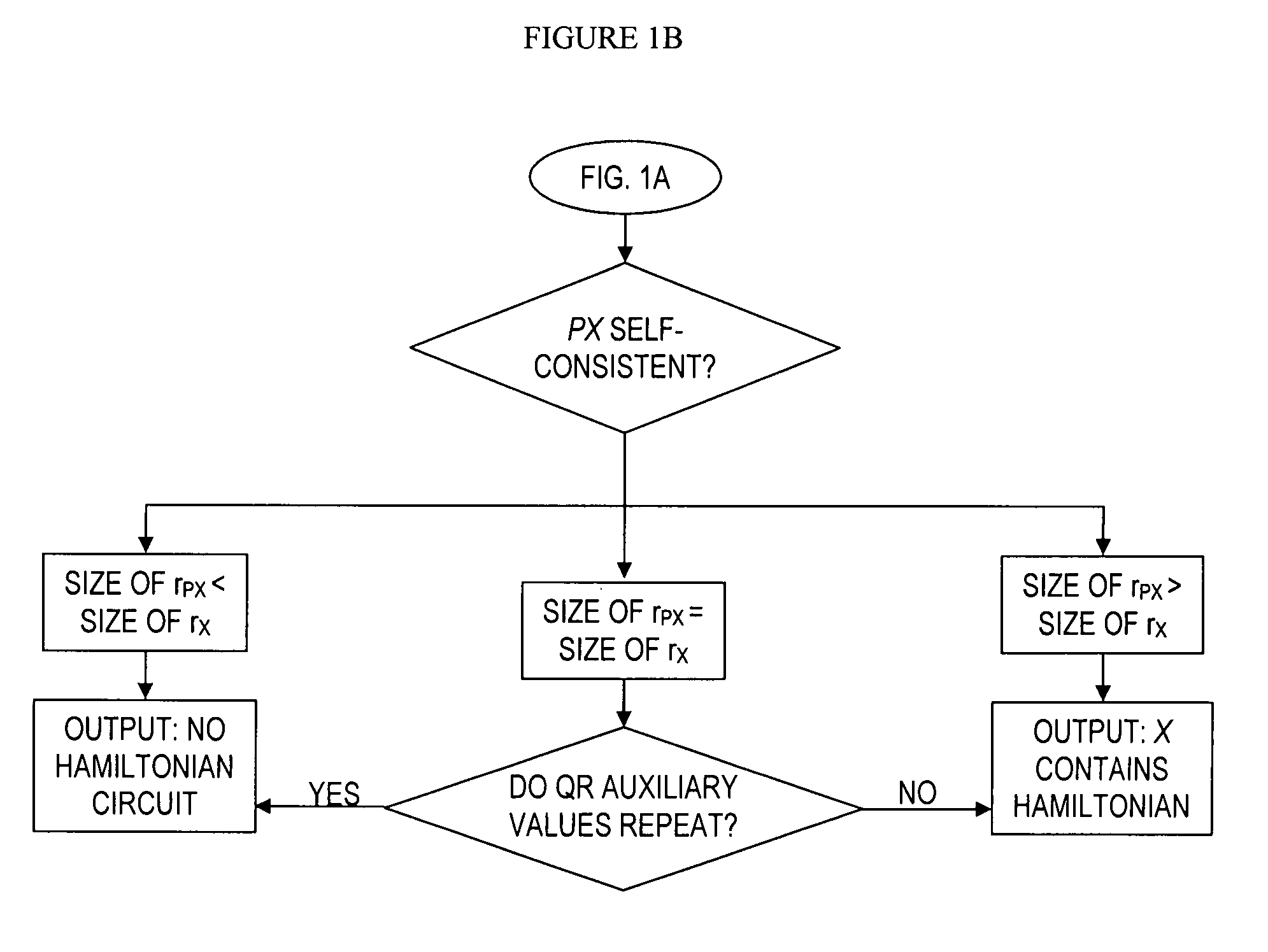Polynomial method for detecting a Hamiltonian circuit
a polynomial method and circuit technology, applied in the field of computer software and execution of software algorithms, can solve the problems of increasing the difficulty of constructing algorithms capable of solving mathematical problems, no algorithm has yet been devised that can solve problems in polynomial time, and the problem is deceptively complex
- Summary
- Abstract
- Description
- Claims
- Application Information
AI Technical Summary
Benefits of technology
Problems solved by technology
Method used
Image
Examples
Embodiment Construction
[0022] Reference will now be made in detail to an embodiment of the present invention, an example of which is illustrated in the accompanying drawings.
[0023] It is known that an NP-complete problem can be transformed into any known NP problem, and that this transformation can be done in polynomial time. Thus, in the example above the Hamiltonian circuit problem may be transformed into any other known NP problem (such as the Traveling Salesman problem) and has applications in any context that can be represented by a graph, map, or network structure as well as a multitude of other applications listed in the Computers and Intractability text. The reverse calculation of this transformation, i.e. from any NP problem back into the NP-complete Hamiltonian circuit problem also has a polynomial running time. The composition of this reverse calculation from any known NP problem to the Hamiltonian circuit problem with the polynomial running time of the given algorithm together form a polynomi...
PUM
 Login to View More
Login to View More Abstract
Description
Claims
Application Information
 Login to View More
Login to View More - R&D
- Intellectual Property
- Life Sciences
- Materials
- Tech Scout
- Unparalleled Data Quality
- Higher Quality Content
- 60% Fewer Hallucinations
Browse by: Latest US Patents, China's latest patents, Technical Efficacy Thesaurus, Application Domain, Technology Topic, Popular Technical Reports.
© 2025 PatSnap. All rights reserved.Legal|Privacy policy|Modern Slavery Act Transparency Statement|Sitemap|About US| Contact US: help@patsnap.com



